How to declutter a small kitchen – 10 ways to streamline your cooking space with ease
Achieve your tidiest kitchen ever with these clever solutions for clearing out clutter
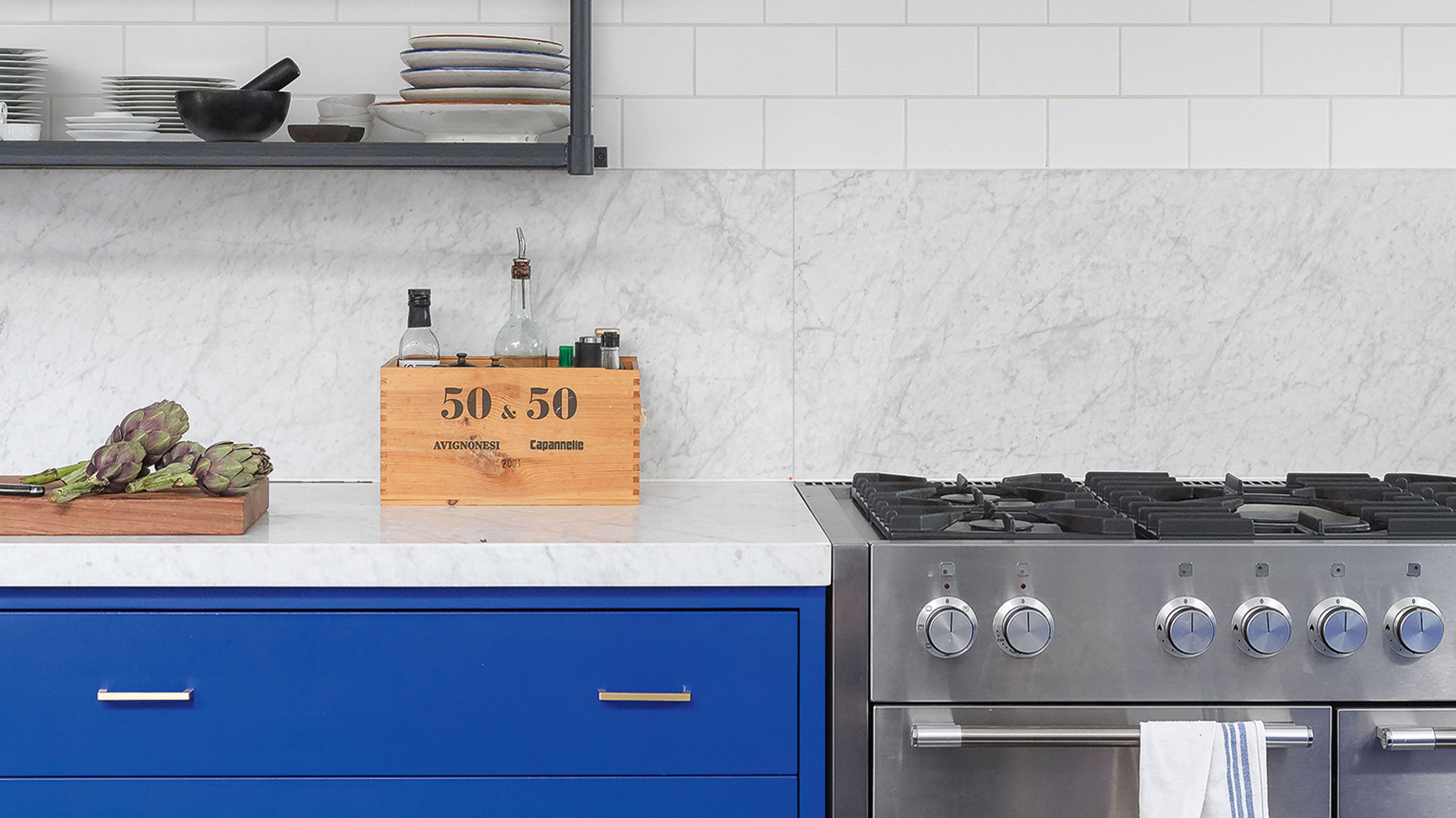
Despite their petite proportions, small kitchens are expected to house an awful lot of ‘stuff’, which can quickly turn into clutter if not dealt with properly. Luckily, in this case, it’s not the size that matters. Knowing how to declutter a small kitchen effectively is the key to achieving – and maintaining – a neat, tidy, and functional space that’s a pleasure to cook in.
Clearing clutter alone isn’t enough. If you want to make the space work for you going forwards, you’ll need to implement sensible systems and be a bit savvy with your storage ideas, experts say.
We’ve spoken to expert home organizers and kitchen pros for 10 tips to declutter your kitchen, and get a great result even if your space is compact.
How to declutter a small kitchen
It’s important to start your decluttering session in the right mindset, so before you begin, have a good think about how you really use your kitchen on a frequent basis. You may well have grand cooking ambitions, but if your reality is easy weekday meal prep, speedy coffee breaks, and the occasional cookie-baking session, you’ll want to prioritize relevant items over and above fancy appliances, utensils, and cookware.
‘It's surprising how little you actually need to run a well-functioning kitchen. Successful decluttering comes when you’re happy to make do with a smaller range of essential kit – it makes it easier to let other things go,' says professional organizer Laura Price of The Home Organisation.
1. Avoid the big clear out
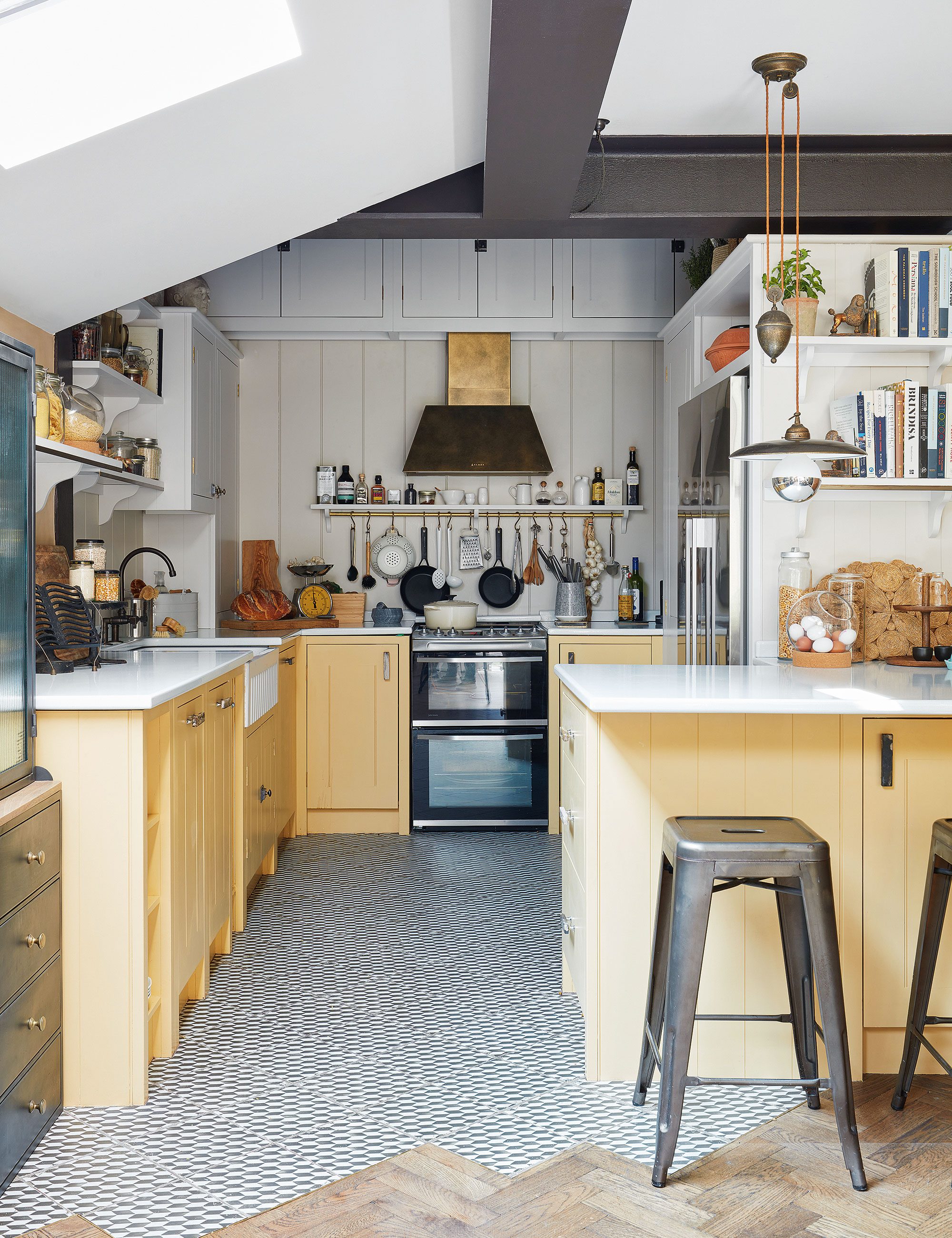
When organizing a kitchen in general, experts usually recommend you start by taking everything out of cabinets and drawers. However, if you’re organizing a small kitchen, this often makes the decluttering process a lot trickier than it needs to be.
‘Many people start a kitchen clear out by taking everything out and putting it on the countertops, but trust me, this will fill the space quicker than you think. Instead, open up the cabinets and take a good look inside first. Ask yourself questions; ‘Do I really need that serving platter there all year round? Or could I replace it with something more practical? In fact, do I even need it at all,' says professional organizer Vicky Silverthorn of You Need a Vicky.
By taking this approach, particularly when decluttering kitchen cabinets, you can eliminate a lot early on in the process, meaning there’s less to rifle through when you do move on to the next steps. It’s also good practice for decluttering as you go – if it’s easy to do and doesn’t involve too much upheaval, you’re more likely to do it on a regular basis.
2. Deal with duplicates
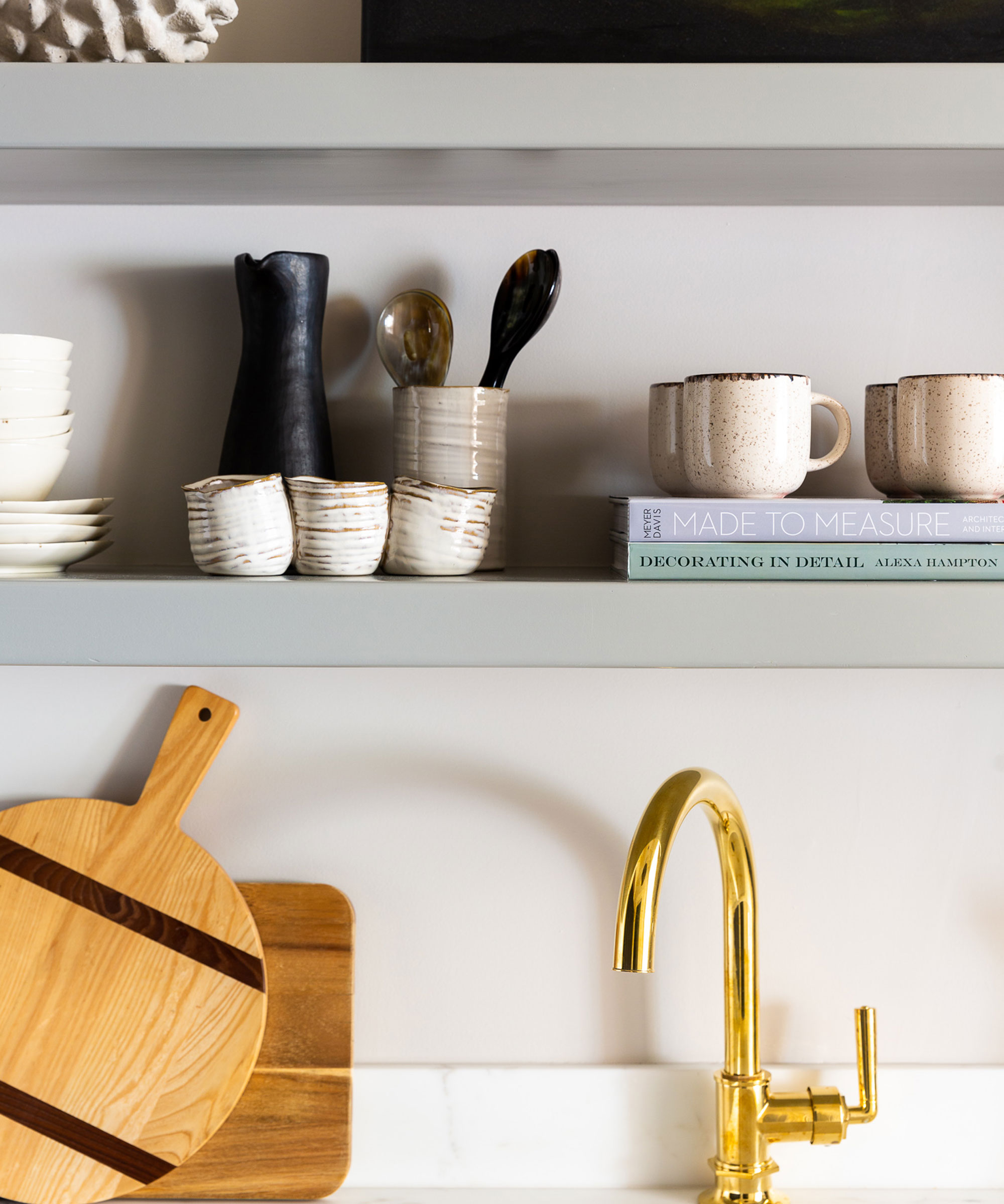
Unwanted and broken items are easy to get rid of, but duplicates are a little trickier, particularly if they’re in good condition. The trick is to be strict with yourself. While those with limitless space might have the luxury of doubling up, in a small kitchen, it’s just not feasible.
'Let’s be real, in the average home, who actually needs two sets of measuring cups or five spatulas? Keep only the ones you use most often and get rid of the rest. You’ll be amazed at how much extra space you have,’ says Karina Toner, Operations Manager at Spekless Cleaning.
Going forwards, it’s a good idea to invest in kitchen items that have more than one purpose. Do you really need that egg slicer? Or that bagel cutter…? A knife can perform both tasks just as well.
We’ll allow you a little slack on mugs, crockery, cutlery, and so on, however, realistically, you only need enough for 1-2 daily meals plus a few spares; you shouldn’t be leaving dirty dishes on the side anyway! If you’re worried about entertaining, consider borrowing from a friendly neighbor, or using a rental company.

Karina is the Operations Manager at Spekless Cleaning, a trusted maid service based in Washington D.C. The team has over five years of experience providing top-quality cleaning services for both residential and commercial clients. Karina oversees every aspect of the business, ensuring that every client gets the same top-notch service every time.
3. Be savvy with where you store things

If you really can’t bear to part with that fancy crockery set that comes out once a year, we’re not going to force you – it’s your home after all! But if it’s a decluttered kitchen you’re after, the experts strongly advise you to find somewhere else to store it. Outside of the kitchen altogether, ideally.
‘If you have occasion-ware which only comes out at Christmas, keep it out of the way in a less accessible cupboard. If space is tight, box it safely and store elsewhere, such as a spare bedroom closet or the loft, to maximize the usability of your kitchen,' says interiors therapy and feng shui expert, Suzanne Roynon.
Once you’ve worked your way through every cupboard and drawer, Suzanne recommends reassessing how you use the kitchen. Are the coffee cups close to your coffee maker? Would it make sense to move the toaster to another part of the room to ease congestion in the morning?
'Have the confidence to change things around to suit your lifestyle and the way you use the kitchen. What worked two years ago isn’t necessarily the most practical solution now!'

Suzanne is a specialist Interiors Therapy Expert and author of Welcome Home, How Stuff Makes or Breaks your Relationship – available on Amazon. She has spent more than 25 years in corporate and charity roles, using her ability as a therapist and public speaker to help people understand their relationship with their homes and possessions.
4. Assess your appliances
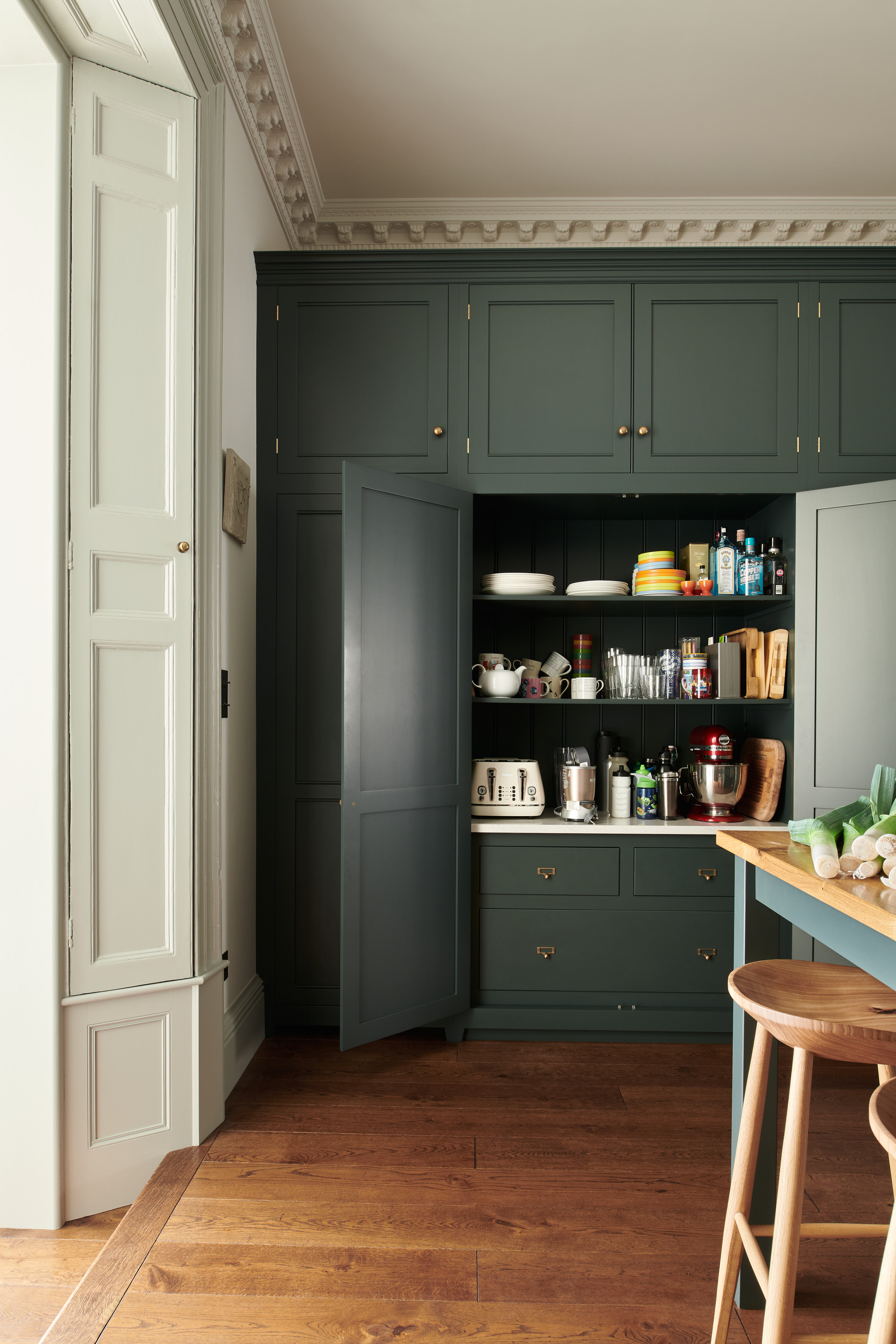
Big, bulky, and often pretty ugly, kitchen appliances are the bane of a small kitchen. With storage lacking, they usually end up sitting on countertops, which instantly makes the room feel even smaller.
Now’s the time to reassess. Whether it’s a gifted pasta machine you’ve never gotten around to using or a vegetable spiralizer that’s never made it out of the box, give yourself permission to donate those items you really won’t make use of. The same goes for any kitchen item, provided it’s in good enough condition.
‘I like to keep a donation box nearby when I’m decluttering; imagining where those items are going and who they might bring joy to makes the decision-making process a lot easier, something to bear in mind if you’re wondering how to declutter when feeling overwhelmed,' says professional organizer Toula Adu, owner of BizzyBee Organizing.
5. Clear the decks
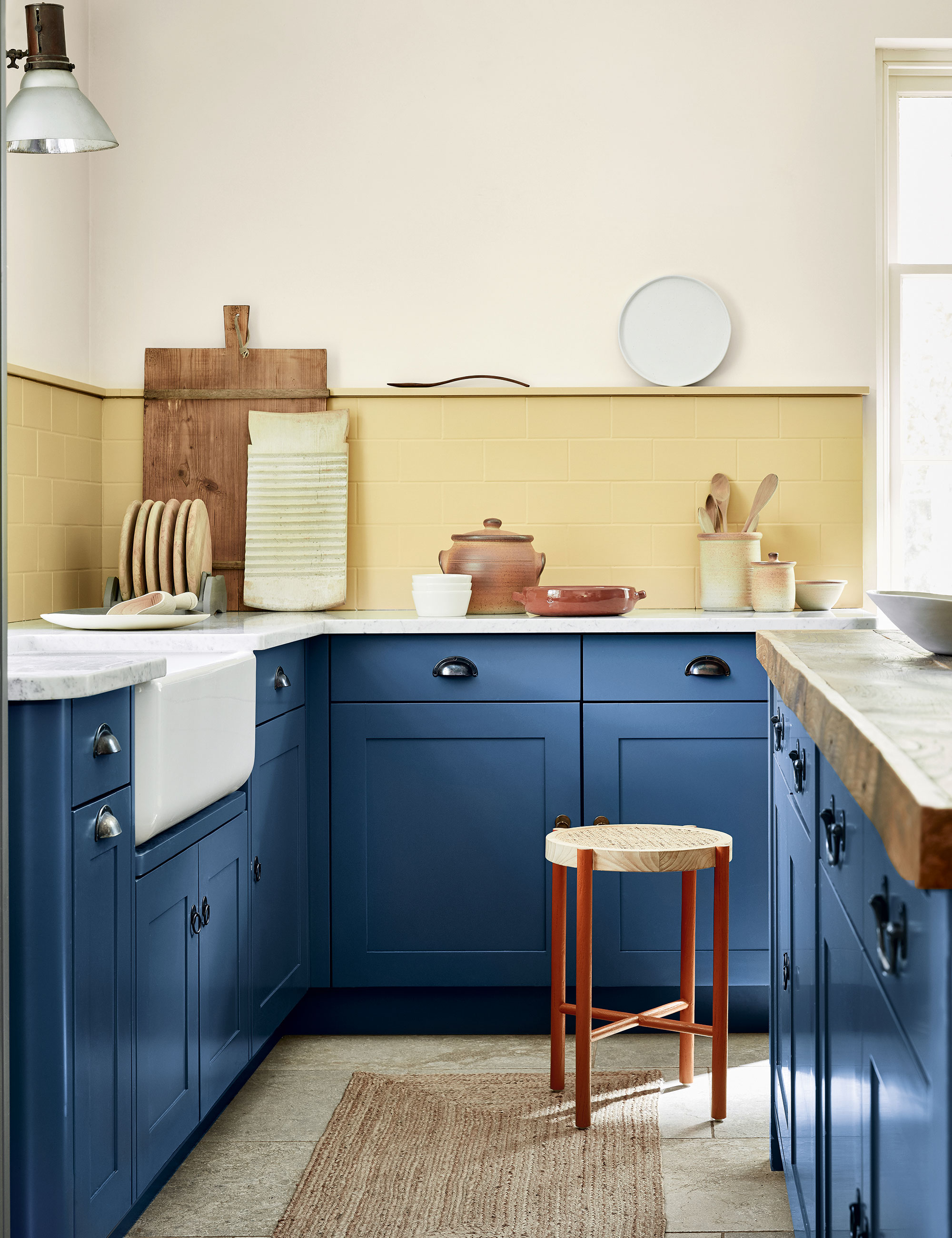
If you’re lacking in cabinets, it’s tempting to start using your countertops as extra storage, but it’s really not beneficial in the long run. Not only does it make for an untidy feel, but it also cuts into your cooking space and makes cleaning a kitchen afterward a real chore. Knowing how to declutter and organize kitchen countertops so they remain clear is one of the best things you can do to maximize space.
‘Take inventory of what’s causing your counter clutter, and then create solutions to combat it. If space is limited, don’t let cleaning supplies like paper towels, dish soaps, or sponges take up countertop real estate – create space elsewhere by adding a paper towel holder, at Amazon, to the inside of a cabinet, or a storage caddie, at Amazon, to the inside of the sink itself,' says Catherine, co-founder and interior designer at Clairrow.
It’s also a good idea to create a central ‘hub’ for mail, keys, homework… anything else that has a tendency to stack up on the sides. Ideally, this would be positioned away from the kitchen altogether, perhaps nearer the front door for ease.
6. Utilize every inch of space
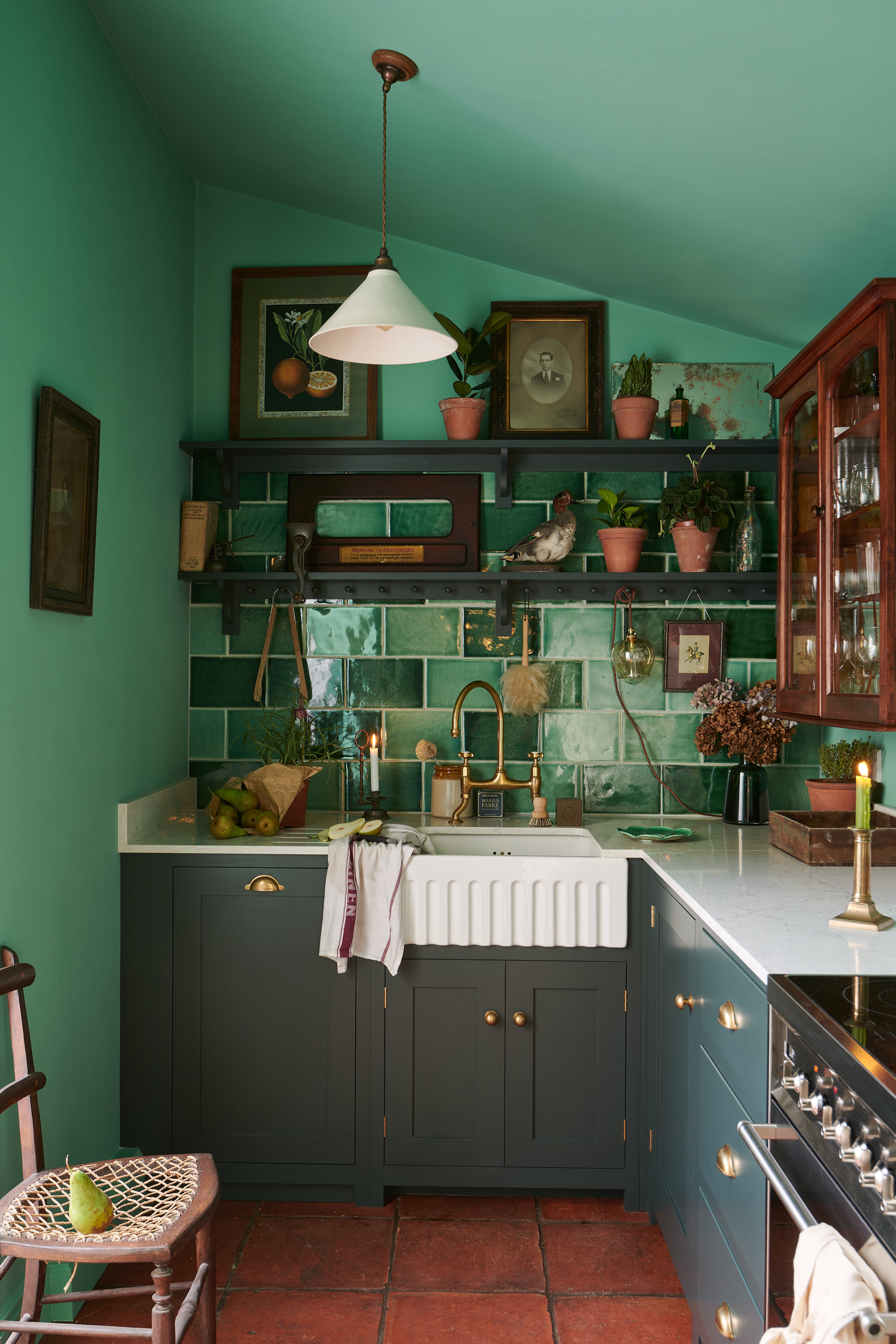
If you have a small kitchen, chances are you don’t have a lot of ‘closed’ storage, so you’ll need to make the most of what you’ve got to keep items organized. Rather than taking up surface space, think about ways your walls could work for you.
'Utilizing vertical areas such as the back of a door and the side of a counter, as well as walls, will ensure you’re optimizing every inch of space. Beyond shelving, products like our popular wall and door rack, on Amazon, and the 3-tier spice rack, also on Amazon, store jars, cans, and other bulky food containers securely and out of the way, freeing up space when organizing shelves and keeping surfaces clutter-free,' says Valerie Cavallaro at ClosetMaid.
Creating these extra small kitchen storage ideas can make a huge difference, not just to how streamlined your small kitchen looks, but how well it functions, too.
'My number one tip is to get magnetic strips, at Amazon, for your kitchen walls. Place them near the stove and hang knives and utensils. That way, when you’re in the middle of cooking, you can just grab them off the wall, no need to rummage around in drawers’, says professional organizer Amy Bloomer of Let Your Space Bloom.
7. Give every item a home
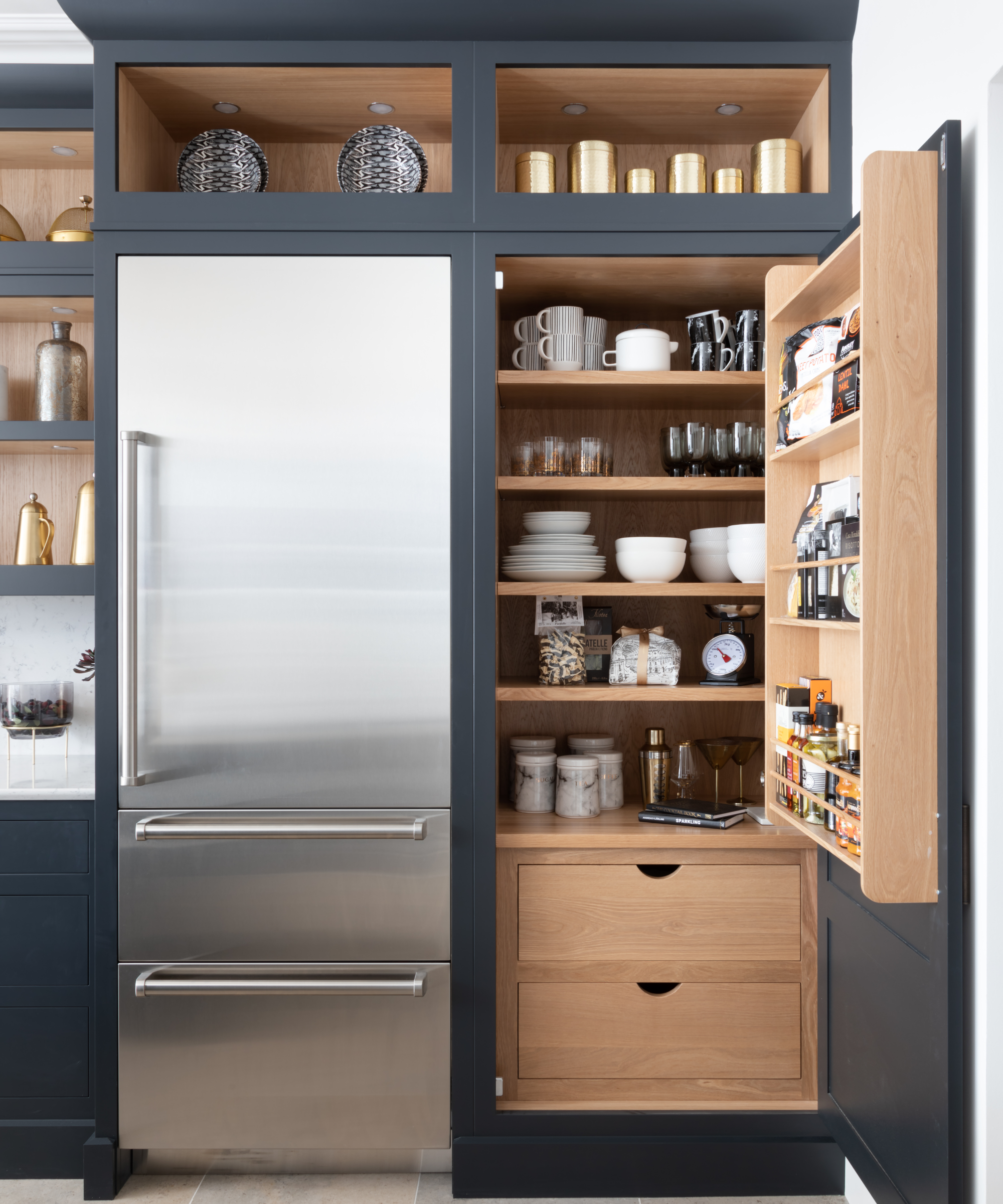
One of the most common kitchen storage mistakes is not having a place for everything, particularly in small kitchens where there’s no room for surface clutter. Start by considering how you use your small kitchen and what items truly need to live in it.
‘A kitchen's primary role is for cooking and eating. We often see kitchens that double as workstations, craft spaces for kids, medicine cabinets, tool storage...all sorts! If the clutter is too much in a small kitchen, consider what of those things can be relocated elsewhere – can the medicines go in the bathroom, and the tools in the shed? It may not be quite as convenient, but if you don't have space for the fundamentals of your kitchen, there need to be some compromises,' says Laura.
Next, find homes for your kitchen-specific items, prioritizing prime positions depending on the frequency of use where necessary. For any items remaining at the end, Chi Ip of Boston-based cleaning service, Tidy Here, suggests using the boxing strategy:
Put any miscellaneous items in a box, somewhere out of sight. Set an amount of time, usually 1-3 months, and anything you haven’t needed or missed in that time can be thrown away or donated. Structured strategies like this are particularly effective if you find yourself struggling with the decision-making process, something to bear in mind if you’re trying to declutter when feeling overwhelmed', she says.
8. Prioritize practicality
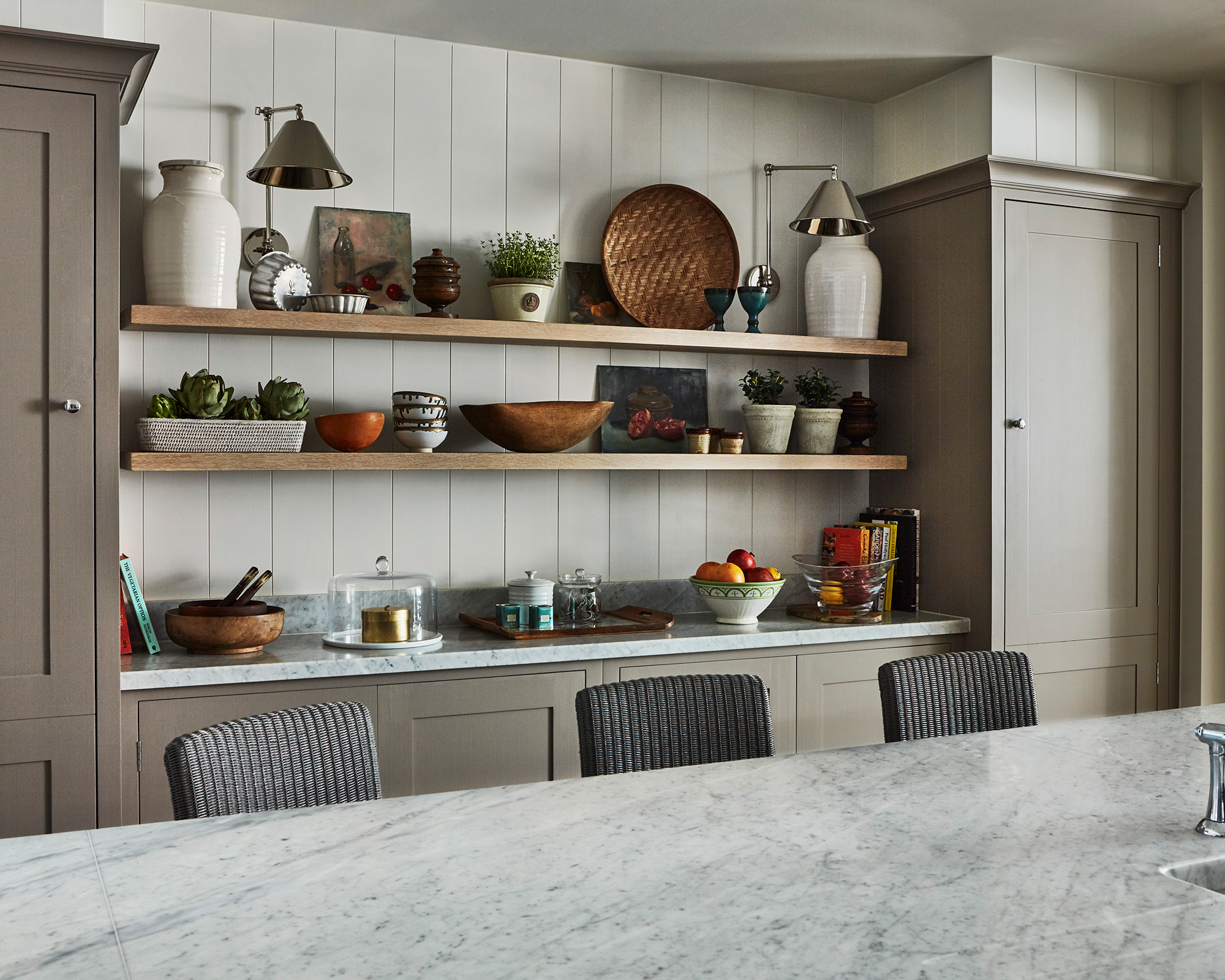
When organizing small spaces of any kind, the decor is best kept to a minimum, but it’s worth remembering that a completely clutter-free kitchen can look a little stark. It’s understandable that you’d want to inject personality – it is the heart of the home, after all. Combining style and storage is a great way of achieving this, but ultimately, you want to prioritize practicality over prettiness.
‘While Kilner jars might look lovely on a shelf, they’re not the most space-efficient. If you’re desperate to decant, consider using stackable airtight containers, at Amazon, or leave items in their packets (remove bulky outer packaging) and invest in stylish-looking baskets that can hold multiple items instead’, says Millie Hurst, section editor at Homes & Gardens.

Millie Hurst is Section Editor at Homes & Gardens, overseeing the Solved section, which provides readers with practical advice for their homes. Millie has written about and tried out countless cleaning and DIY hacks in the six years since she became a journalist, and has worked in both London and New York.
9. Keep food in check
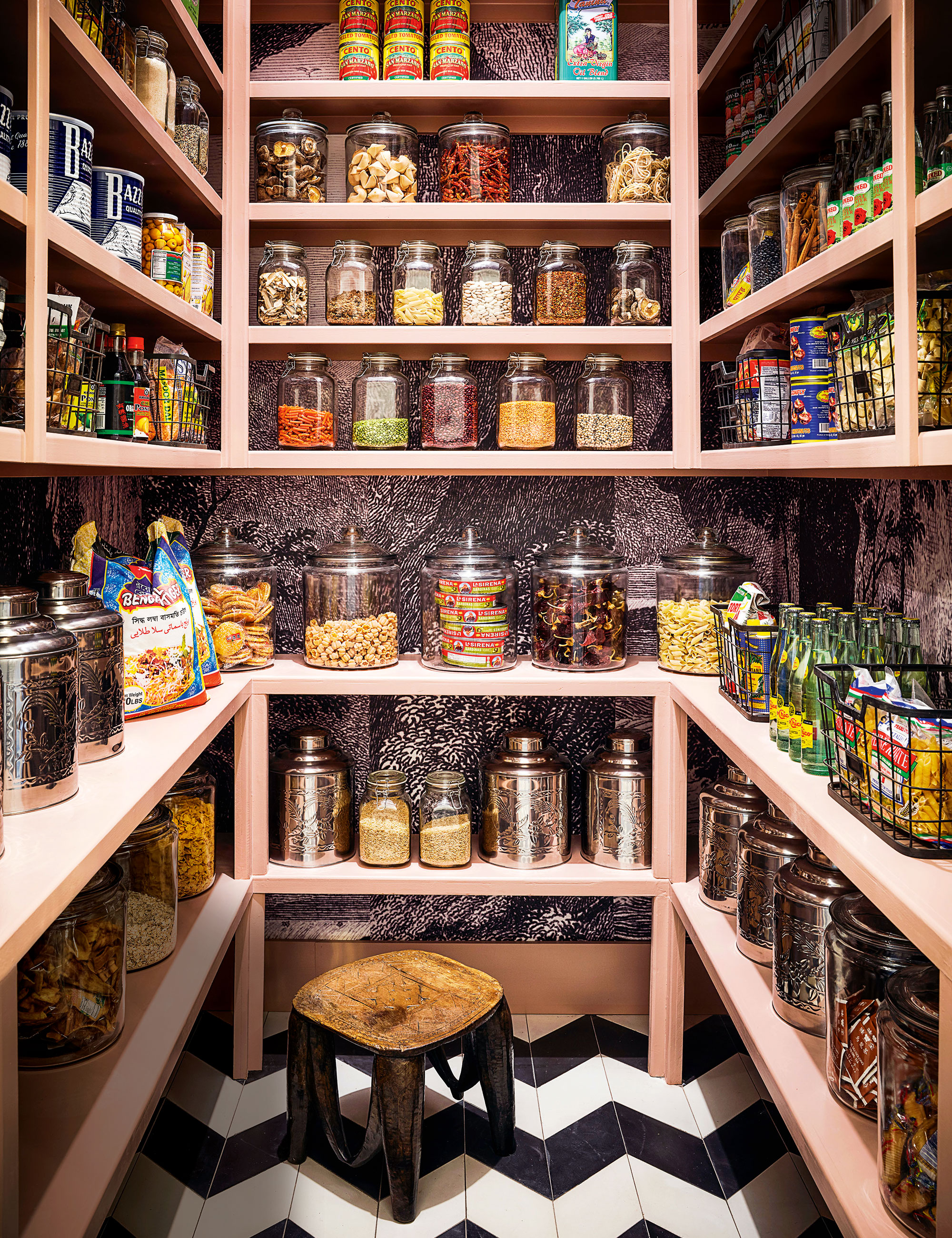
‘Be honest about foodstuffs, herbs and spices you won’t eat. If they’re in-date and unopened, donate them to a food bank, otherwise put them in the recycling bin’, recommends Suzanne.
If you haven’t got the luxury of designating specific drawers or cabinets for different categories of cookware, you’ll need to be conscious of how you’re organizing them, particularly when it comes to food. If your tins and jars are constantly getting jumbled with utensils and cookware, you won’t be able to see what you actually have; items will expire, and you’ll end up buying the same things over and over again.
‘Lazy Susans' are a great way to store spices, ensuring they stay in place and rotate so you can easily see and access what you need. Shelf risers also work really well, as do clear storage containers; you can easily see when things are running low. Add shelving racks into cabinets to ensure you’re maximizing the full height – be sure to measure up beforehand to ensure you’re not left with any dead space’, says professional organizer Emma George of Declutter with Emma.
The same goes when decluttering and organizing a refrigerator, too. Be mindful of positioning labels to the front, and arrange food like you would in a shop; with those items most near to expiry closest to hand.
10. Avoid buying in bulk
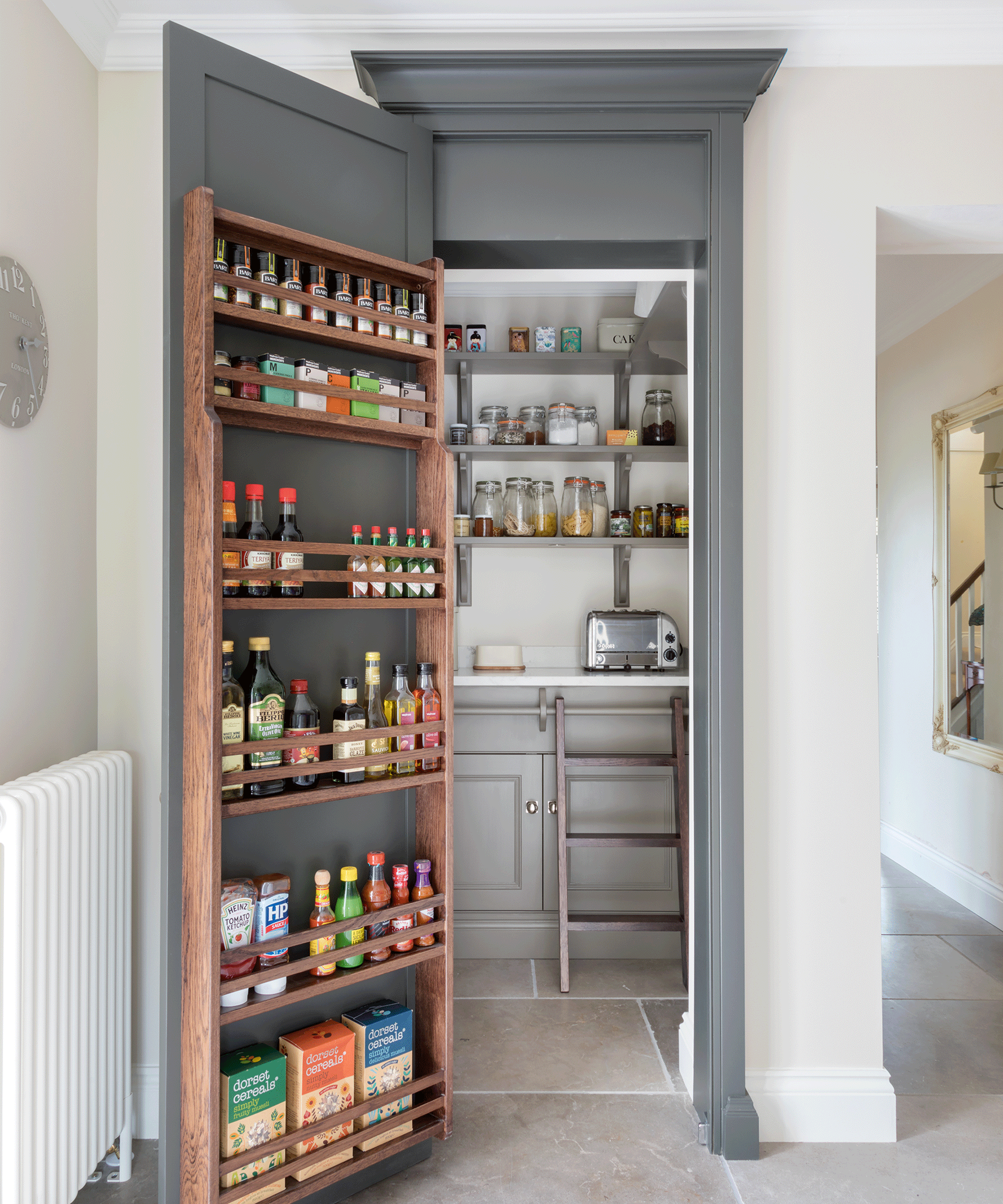
‘One thing that can cause real problems in small kitchens is bulk buying. It's great to be able to save money on those things you use often, but if you don't have the space to create a good storage area for all of those spares, the kitchen quickly becomes unmanageable. Having a really good understanding of the number of things you can physically fit in your kitchen is key to keeping things in shape’, says Laura.
FAQs
How do I make my small kitchen less cluttered?
Countertop ‘space’ often gets confused with storage space in kitchens, particularly small ones where hidden storage options are often limited. This build-up of ‘stuff’ on the sides is what makes for a cluttered feel, but it can quickly be undone; the trick is to keep on top of it.
Keep on-show appliances to a minimum and give items a home inside cabinets and drawers. If you’re struggling for space, implementing vertical storage opportunities is preferable to using up surface space, but if you really have no choice, group items by type into stylish storage – baskets, jars, trays and the like, to create a sleek, pared-back feel. Be mindful of ‘everyday’ paraphernalia too; designate a spot somewhere out of sight, or ideally out of the room altogether, to keep unopened mail, bills, homework, spare change, keys and so on.
How can I declutter my kitchen fast?
Regardless of what room you’re organizing, efficient decluttering comes down to how quickly you can make decisions. But with so many ingredients, utensils, cookware and other household paraphernalia to work through, a kitchen can really take some time. Luckily, here are decluttering strategies you can employ that takes the decision out of your hands altogether.
Try setting rules in advance. Examples include: is it broken? Do you use it? Do you already have one, or do you have a similar tool that can perform the same task? Stick to them – no exceptions, and you’ll find you’ll get through things a lot more quickly. If you’re still struggling for time, consider setting a timer.
As somewhere you likely need to access and use frequently, we can understand you wanting to declutter a kitchen fast. However, given the amount of stuff you need to work through, it’s unreasonable to think you’ll be able to get the job done in just a few hours – not well, at least. With that in mind, we’d advise breaking down your decluttering into sections. Don’t take everything out at once, move through your kitchen cabinet by cabinet, drawer by drawer. That way, you can complete a task successfully, then continue the process... after lunch!
So there you have it. We’ve given you all the decluttering tips you need to transform your small kitchen into a functional, well-organized space, worthy of the biggest culinary achievements… the rest is up to you!
Next, learn what happened when one of our writers tried using the Japanese concept of Mottainai to declutter their kitchen cabinets.
Sign up to the Homes & Gardens newsletter
Design expertise in your inbox – from inspiring decorating ideas and beautiful celebrity homes to practical gardening advice and shopping round-ups.
For 10 years, Tara King worked as a Content Editor in the magazine industry, before leaving to become freelance, covering interior design, wellbeing, craft and homemaking. As well as writing for Ideal Home, Style at Home, Country Homes & Interiors, Tara’s keen eye for styling combined with a passion for creating a happy – and functional – family home has led to a series of organization and cleaning features for H&G.
-
 Plants never to grow next to fruit trees
Plants never to grow next to fruit treesExpert advice on which plants to keep away from fruit trees to encourage a healthy harvest
By Jacky Parker Published
-
 Martha Stewart's tips for arranging daffodils are unbelievably simple and effective – it's the only flower advice you need this springtime
Martha Stewart's tips for arranging daffodils are unbelievably simple and effective – it's the only flower advice you need this springtimeMartha shows us that we can create gorgeous bouquets of this seasonal flower by simply trimming the stems and placing them in specific vases
By Hannah Ziegler Published